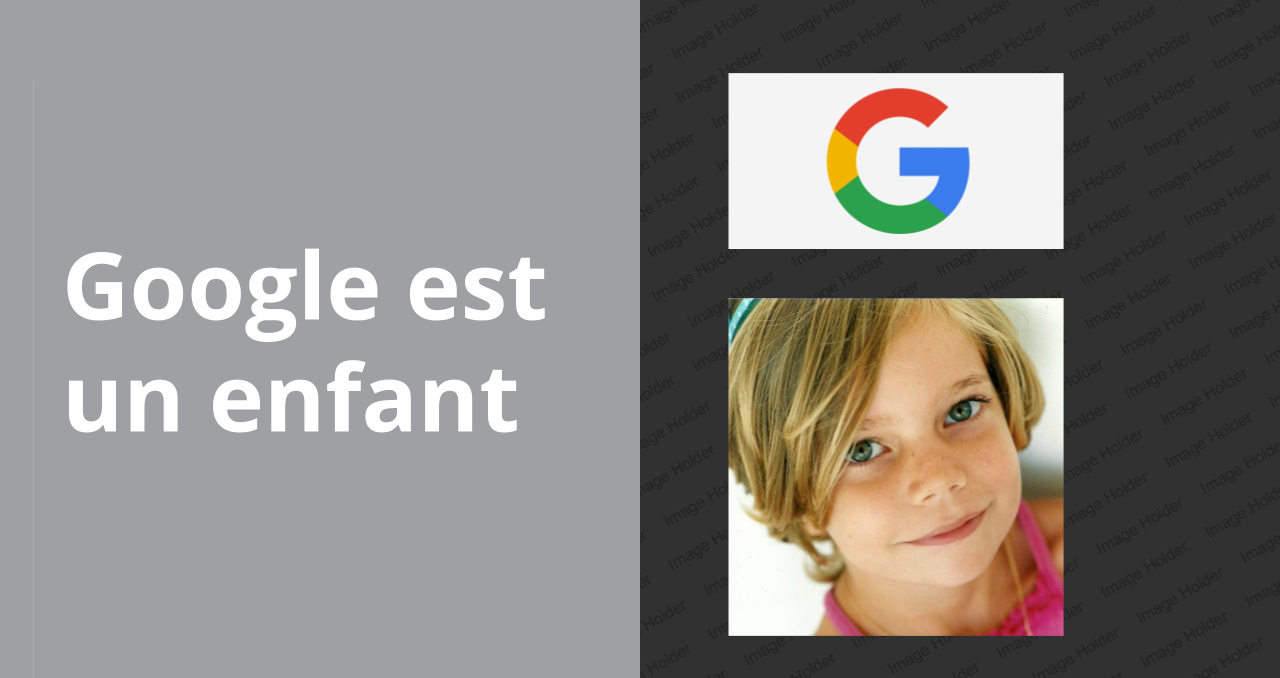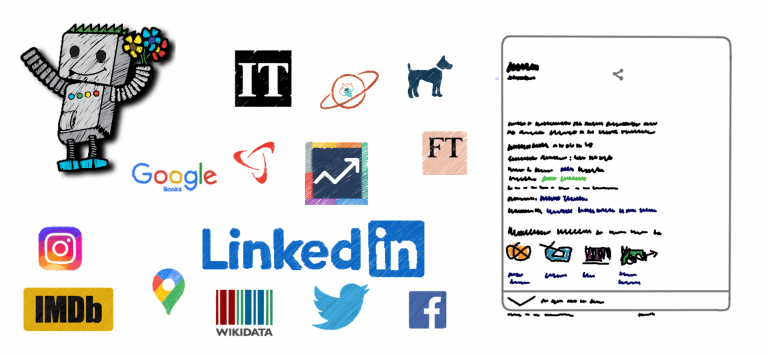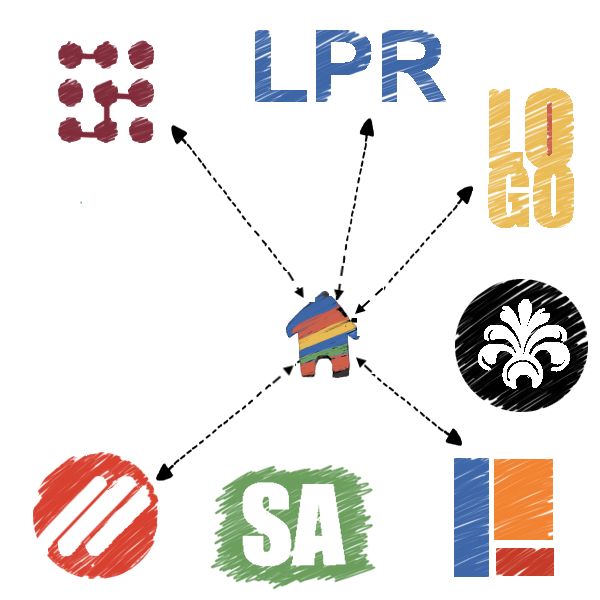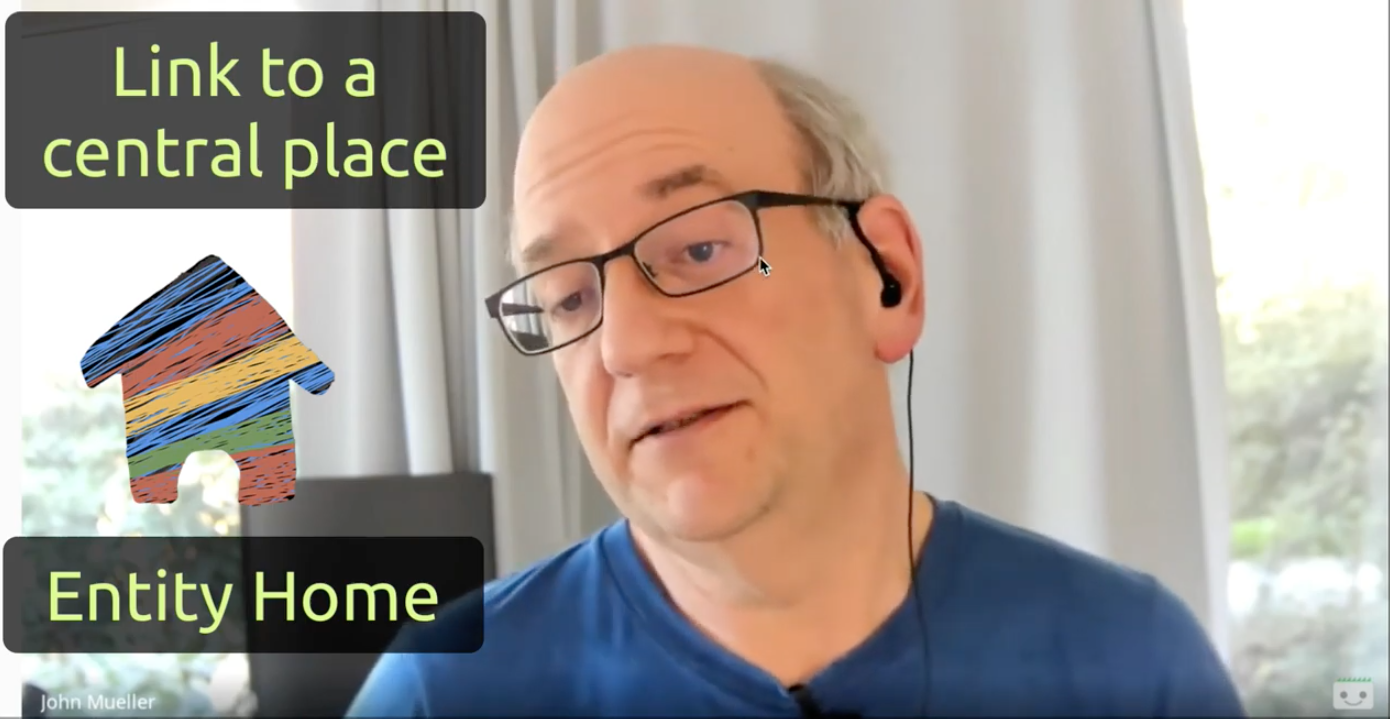Knowledge panels for people, podcasts, books, TV series, songs, companies, and even fictional characters help searchers quickly learn more about that entity.
For a person with any sort of a public profile, understanding how the knowledge panel is triggered and populated is essential for ensuring the information it contains is correct and complete.
In this column, you’ll learn a simple three-step process to trigger a knowledge panel for yourself, a client, or any other person. You’ll find:
- What an Entity Home is and why it matters.
- An approach to teaching Google about the person you want to trigger the knowledge panel on.
- A 3-step process for achieving a personal knowledge panel.
- How long it takes to get a knowledge panel.
- Who can get a personal knowledge panel on Google.
Ready? Let’s get to it!
People Are Particularly Challenging for Google
Bear in mind that there may be hundreds or even thousands of people that share the same name. Search on LinkedIn or Facebook to get an idea of just how ambiguous your name is.
This ambiguity is a big problem for Google.
It means that confusion and mix-ups are par for the course and can be difficult to sort out, too. User intent is incredibly difficult to identify; after all, which Jason Barnard do they mean?
That means you need to invest the time in being clear, consistent, and careful for this to work.
The Approach: Educating a “Child”
I’ve been using this analogy for years.
Why?
The Knowledge Graph algorithms that drive knowledge panels on Google are much like a child. They both want to learn. They are sponges, thirsty for knowledge. They both learn in much the same way.
Like a child, Google requires:
- Information from the most authoritative source (logically that should be the person themself).
- A clear initial explanation.
- Corroboration from trusted sources.
- A consistent message from all sources.
- Communication in an easily digestible language.
- Time.
Take the lead — you are the teacher.
Like a teacher, you define the facts and lead the process.
And in order to educate effectively, you need to be decisive, consistent, perseverant, and patient.
 A slide from a talk I gave in 2017.
A slide from a talk I gave in 2017.The 3-Step Process to Getting a Knowledge Panel for a Person
Step 1: Identify the Entity Home
This is the single most important part of the entire process and probably deserves an article unto itself.
The Entity Home is the authoritative source Google will use as the reference point for the person. The most authoritative source of information about a person (should be) that person themself, and Google is actively looking for the information “straight from the horse’s mouth.”
Here are some examples of possible Entity Homes, in order of best-to-worst-choice:
- The about me page on the person’s personal site.
- The homepage on the person’s personal site.
- The about page on the person’s company website.
- A social profile (LinkedIn or Twitter have proven most effective so far).
Although John Mueller suggests a social profile might be an option (see below), and a company website is a possibility, I recommend choosing an owned domain and a page that is 100% dedicated to the entity.
I have triggered knowledge panels for a lot of people and a dedicated, 100% owned Entity Home has always kept time, effort, and annoyance to a minimum.
 On the Entity Home, aim for clarity. Don’t try to explain everything in one single sitting.
On the Entity Home, aim for clarity. Don’t try to explain everything in one single sitting.
Being clear with this foundational description is vital. Explain who you are clearly in a language it understands:
- Who I am.
- What I do today.
- My relationships with other entities Google knows (employers, family, educational establishments, awards, etc.).
- What I did previously.
This is remarkably similar to a CV, as Andy Crestodina has mentioned before.
Add Schema.org markup to the Entity Home. This is helpful as it presents key information in a machine-readable format that is Google’s “native language.”
You can also use it to indicate unequivocally where Google can find the corroboration/confirmation it desperately needs (see step 3).
Who the audience might be may seem redundant for a person. But it isn’t, as we’ll see later.
Step 2: Corroborate and Confirm
Like a child, Google needs to hear this same information from multiple trusted sources (grandparents, siblings, teachers, local sages).
You need to ensure that relevant, authoritative sources confirm what you are telling Google on your Entity Home.
And that means going to every relevant profile page and article about yourself and fact-correcting them to ensure they confirm some or all of the statements of fact you have made on the Entity Home.
This is easy where you have a good deal of direct control – on your social profiles, for example. It can be more difficult where third parties have written about the person independently and you need their cooperation.
Google might already have understood which are the person’s official profiles, but often it is unsure as there will be hundreds or perhaps thousands of profiles with the same name.
It is absolutely vital that there is consistency across those — and as we’ll see later, they must consistently point back to the Entity Home).
Unfortunately, Google also understands that this is simply repetition from the source itself with no independent arbitration, so you need more.

Third-party corroboration is essential and much stronger than self-confirmation.
Correcting those you control is the foundation (think strings and sticky tape), but getting independent parties to add credence is key to joining the dots in such a way that they don’t break.
Step 3: Create an Infinite, Self-Confirming Loop
As a human, repetition can get annoying. For a machine trying to understand the world, it is the one thing it craves.

The Entity Home (step 1) means nothing if Google hasn’t understood and accepted your choice. Importantly, you choose.
Done well, Google will understand and docilely accept. You should know instinctively which page is the Entity Home. Choose your best candidate and work to convince Google.
Google is looking for the most authoritative page on the web about the person. Google prefers options 1 and 2 above – a page that is on a site 100% owned by the person. Makes sense. Options 3 and 4 – sites you don’t own 100% — require more effort.
Side note: This is a long-term decision – once Google has accepted and Entity Home, changing its mind on that is something that has proven exceptionally difficult. It’s not impossible but is certainly time-consuming, slow, costly, and boring – a job I personally do not enjoy.
So choose wisely.
Why You Should Not Let Google Choose
Google will eventually attribute an Entity Home, whether you educate it or not. But if you just “let it get on with it,” the choice will be that of a confused child, based on fragmented and confusing information.
Ideally, you won’t let Google make its best guess. You’ll educate it so it understands, rather than letting it stick a pin in the proverbial donkey.
How to “Force” Your Choice on Google
From the Entity Home you have chosen, link to the corroborative sources (both first and third party). From those corroborative sources, link back to your Entity Home.
It really is that simple.
Here is what the machine sees.
- CV on your Entity Home page (from the horse’s mouth).
- Link to a dedicated page on another site.
- Confirmation of that information (more or less authoritative, more or less duplicate, but confirmation nonetheless ).
- Link back to the Entity Home page.
- (Re) confirmation of that information.
- Link to a dedicated page on another site.
- Confirmation of that information (more or less authoritative, more or less duplicate, but confirmation nonetheless).
- Link back to the Entity Home page.
- Etc.
This is brute force education — not an education you would give your child, but Google is special. That is what the machine needs. If you aren’t famous, this is what works.
Why This Simple Process Is So Effective
This is what Google is actively looking for. All you are doing is explaining, pointing it to confirmation, and centralizing… all of which educates the “child.”
John Mueller from Google talks about this exact concept in the context of E-A-T.
“…link to a central place where you say everything comes together…”

What JohnMu suggests is that if Google doesn’t understand who you are, it cannot apply those juicy E-A-T (expertise, authoritativeness, and trustworthiness) signals.
In order to understand who you are (and therefore be confident when applying those signals), it needs a reference point – the Entity Home.
The information is out there and you probably created a great deal of it. But typically, that information is fragmented. To join the dots (reconciliation, in John Mueller’s words), all Google needs is a pivot/hub/reference point.
“…we call that reconciliation…”
The information is out there, and the machine has collected it. Like a child, it has tried to join the dots and perhaps even thinks it might have figured this out.
You can help by showing it exactly how to join those dots.
In a situation where the machine has understood but lacks confidence, the Entity Home simply confirms what it thought it knew. That makes the process described above one of the simplest and most straightforward SEO tasks you’ll ever undertake.
We’ve seen that when the machine understands the fundamental facts about an Entity, once the Entity owner confirms, a knowledge panel triggers in days to weeks.
In a situation where the machine is confused and cannot get its facts straight in its own “mind,” the Entity Home will be the reference – a crutch – that gives it the statements of facts it needs to confirm through verification and corroborate.
Weight of proof is a nice concept to bear in mind here.
How Long Does It Take for a Personal Knowledge Panel?
Things take longer in cases where there is:
- Immense ambiguity (common names such as Simon Cox).
- A lot of confused noise (fake news, multiple famous namesakes).
- Historical baggage (Google has already joined dots wrongly and needs re-educating).
Always remember that it is never a question of whether you can trigger a place in the Knowledge Graph. It’s how much thought, time and effort will it take to educate Google.
Who Can Get a Personal Knowledge Panel Result?
Google’s Knowledge Graph has no notability guidelines – it just wants to understand everything.
Educating Google and getting a place in the Knowledge Graph is achievable for everyone, regardless of notability.
When executed correctly, the three-step process above (Entity Home, corroboration, and infinite loop) will push any person into the Knowledge Graph.
Remember, Google isn’t judging you. It simply wants to understand.
And if you educate it correctly, it will understand.
All Google needs is for you to provide one centralized, authoritative place on the web so that it can reconcile the (honest) CV you provide.
Google is looking for you to provide an Entity Home it recognizes and trusts – a place where it gets the information straight from the horse’s mouth.

Getting into the Knowledge Graph is accessible for every entity. Once in the Knowledge Graph, a knowledge panel “exists” in Google… but then whether Google shows a knowledge panel for any given user query search is another question altogether.
You’ll see your knowledge panel based on:
- Google’s level of understanding.
- Google’s confidence in that understanding.
- Google’s evaluation of the probability the user’s intent is you (which is often very geo-sensitive).
Disclaimer
The article is the equivalent of saying that to rank #1 you “just” need to:
- Make amazing content your audience will love.
- Put it on a website that ticks all the right boxes.
- Make the content a leader with direct and indirect credibility signals.
Just like traditional SEO, entity optimization is full of subtleties, caveats, and boatloads of “it depends.”
But the path and process are pretty straightforward – arguably more so than in traditional SEO. For the moment, anyway.
More Resources:
- How to Maximize Your Reach Using Google’s Knowledge Graph
- A Personalized Entity Repository in the Knowledge Graph
- How Search Engines Work
Image Credits
All screenshots taken by author, June 2021





